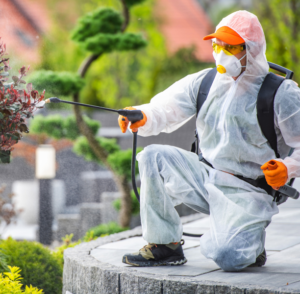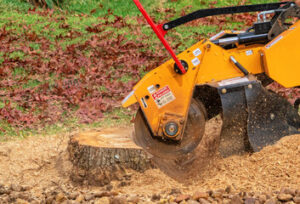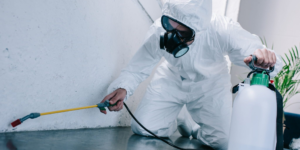Skin Tags are flesh-colored growths that develop where the skin rubs together. They can be annoying or cosmetically undesirable for some people.

Anecdotal reports say that applying apple cider vinegar or tea tree oil to a skin tag can remove it. However, such methods have no scientific backing. Contact Skin Tag Removal Phoenix for professional help.
Health care providers use a variety of procedures to remove skin tags. These include snip excision or cauterization, where a provider cuts off the skin tag; freezing with liquid nitrogen; and electrical burning (electrodescation).
Many people try home remedies to remove skin tags. These methods typically involve using natural substances, such as apple cider vinegar and tea tree oil, or over-the-counter products. However, they don’t always work, and they can also lead to infections or other problems. For example, attempting to cut off skin tags with a razor can cause bleeding and infection. Other home removal techniques, such as tying off or burning skin tags, can cause scarring or irritation. Home remedies also take longer to produce results than professional treatments.
Most home remedies for removing skin tags are anecdotal, with little scientific evidence of their efficacy. Some of them involve soaking cotton balls in a substance and applying them to the skin tag, while others use a liquid or ointment. They may take several days or weeks before the skin tag falls off.
There are also commercial kits available that contain a special band that can be placed around the base of skin tags to cut off their blood supply. These devices are known as ligation bands. They are available at some pharmacies and online. However, these devices are not considered safe and should only be used by trained professionals.
Other home treatments include soaking a cotton ball in liquid iodine and affixing it to the skin tag. However, this method is not recommended by doctors because it could be painful and can leave noticeable scarring on the affected area.
Some people believe that applying tea tree oil to a skin tag can help it dry out and fall off. This is not supported by science, and it can cause a skin reaction in some people. There are also claims that you can remove a skin tag by tying it off with dental floss. This is not a recommended method by health care providers because it can cause scarring, infection, and other serious complications.
Another popular home remedy is to apply a mixture of coconut oil and oil of oregano to the skin tag. This oil can be used to treat many different ailments, including bacterial and fungal infections, as well as viruses. It is important to note, however, that oil of oregano is a strong anti-fungal agent, so it should be diluted before applying it to the skin.
Over-the-counter products
Skin tags (also known as acrochordons) are noncancerous growths of loose collagen fibers, fat and blood vessels. They appear most frequently where the skin rubs against itself or clothing, such as the neck, armpits and groin. People can find them unsightly and wish to get rid of them. Over-the-counter products, such as topical ointments or gels, can help to dry them to the point that they fall off. These are usually sold in supermarkets and pharmacies and are widely available.
There are also some over-the-counter mole and skin tag remover kits that are designed to be used at home. These products contain a combination of natural ingredients or liquid nitrogen substitute that you apply directly to the skin tag to destroy it. However, these kits have not been reviewed or approved by the U.S. Food and Drug Administration, and they may cause serious skin injuries. These kits are typically applied to the skin several times a day and may take weeks or longer to work. They are also often very expensive, and many of them contain highly concentrated salicylic acid, which is toxic to the skin.
These over-the-counter products can be particularly dangerous for people with sensitive skin or a history of skin reactions. They may cause redness, burning and blistering to the skin, or even to the surrounding areas. Moreover, they can lead to permanent scarring or even tissue death. Those who want to reduce the appearance of their skin tags can use other products, such as abrasive pads, ice cubes or cotton balls soaked in apple cider vinegar, to help them fall off.
A physician can perform a variety of surgical methods to remove a skin tag. Typically, these procedures are considered cosmetic and are not covered by health insurance. However, a person should always consult with a healthcare professional to ensure that the growth is not a more serious problem such as skin cancer. If a person notices that a skin tag is painful or starts bleeding, the doctor can determine whether this is a sign of a more serious problem and should remove it immediately.
Medical procedures
Skin tags, also known as acrochordons or soft fibromas, are noncancerous growths of flesh-colored tissue that are connected to the skin’s surface by a narrow stalk. They can vary in color, size and texture. Generally, the fleshy bumps are harmless and don’t cause any discomfort or irritation. However, some people are bothered by their appearance or by the way they cling to clothing or jewelry. Some of them can even impede shaving or get stuck in zippers.
Because of these issues, it is important to consult a doctor about the condition. The physician will examine the afflicted area and may recommend medical procedures for removal.
A doctor can use several methods to remove a skin tag: surgical excision, freezing and electrical burning (cautery). The procedure is usually performed in a clinic. The physician will anesthetize the area before using surgical scissors or another sharp tool to snip off the growth. The doctor can also freeze the growth with liquid nitrogen or a similar substance. This method can leave minor scarring. The doctor can also burn the growth with an electric current in a process called radio cautery or shave it off with an instrument called a Dermablade. During this treatment, the doctor will apply pressure to prevent bleeding and apply an antiseptic to guard against infection.
In some cases, the doctor will suggest ligation to cut off blood flow to the growth and encourage it to fall off. These techniques are used to remove larger skin tags that are in sensitive areas. They are not recommended for use on the face or eyelid.
Most of the time, skin and body tag removal treatments are very quick and easy. Patients can be in and out of the office in a matter of minutes and can return to their normal daily activities right away. There are some potential side effects, such as mild discomfort and redness of the skin, but these should subside quickly. If these symptoms don’t go away, you can use acetaminophen and low-potency anti-inflammatory medications to manage them. Patients should also see a doctor if the symptom gets worse or if they develop any other signs of a medical problem.
Recovery
Depending on the method of removal, recovery times can vary between a few days to a couple weeks. During this time, the skin tags will heal and scab up. It’s important to follow your plastic surgeon’s instructions regarding aftercare for the best possible result. This includes keeping the area clean, avoiding direct sunlight, and preventing irritation.
During the healing process, you may experience some pain or discomfort. This is a natural part of the body’s immune response to the treatment. You can take over-the-counter pain relievers to help with this. It’s also a good idea to avoid rubbing or scratching the area. This can cause further damage and irritated skin. You can also help speed up the healing process by applying a cold compress to the area for short durations.
It’s also important to avoid taking any medications that can thin the blood. This can increase the risk of bleeding after your procedure. It’s a good idea to keep a list of all your medications so your doctor can see if any of them may interfere with the procedure.
Most people develop skin tags as a result of hormonal changes or due to a physical injury. They can also appear in pregnant women. They are usually harmless but can irritate the surrounding skin. They can also grow and enlarge over time. They typically start off small and look like pinhead bumps. They may also bleed or grow darker. People often remove them for cosmetic or aesthetic reasons. They are also more common in people with certain medical conditions, including diabetes and obesity.
While some people try to cut or tie off their own skin tags, this is generally not recommended. It can lead to infection and bleeding. There are also no home remedies that have been proven effective for removing skin tags.
However, there are several methods for removing them professionally. These include cryotherapy, cauterisation and surgical excision. These procedures are less painful than cutting off a tag by hand and have a faster recovery time. The most common procedure is radiocautery, in which your doctor uses a specialized electric current to burn off the skin tag. Cryotherapy is similar but uses liquid nitrogen to freeze the tag, causing it to shrivel and eventually fall off. Alternatively, your doctor could use ligation, in which they will tie off the blood flow to the skin tag with surgical thread.








